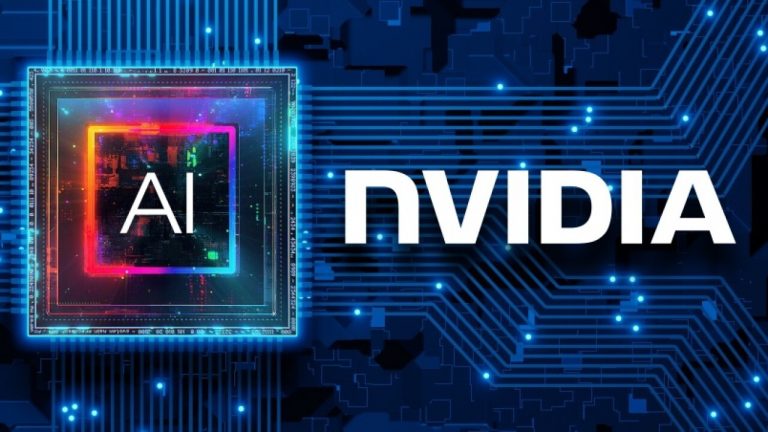Nvidia Blackwell, nicknamed the “Beast” for its power, isn’t just a single chip; it’s a new architecture for GPUs (Graphics Processing Units) designed specifically for artificial intelligence tasks.
Announced at GTC 2024, it represents a significant leap in performance and paves the way for a new era of AI computing. Here’s a breakdown of the critical features of the Nvidia Blackwell platform:
Powerhouse for AI
The Nvidia Blackwell architecture marks a significant leap in AI processing power. The B200 GPU, the heart of this architecture, boasts a monstrous 20 petaflops of AI performance at FP4 precision, translating to a massive 5x improvement over its predecessor, the H100. This superior performance makes the Blackwell ideal for tackling complex AI tasks that require significant processing power.
Read also: Google’s Gemini to power iPhone AI features
Furthermore, the Blackwell architecture is specifically designed to handle enormous generative AI models with up to 27 trillion parameters. These cutting-edge models hold immense potential for various applications. Imagine creating incredibly realistic simulations, developing innovative new materials, or even generating different creative content formats – all powered by the capabilities of these massive AI models.
Unique architecture
The Nvidia Blackwell architecture takes a unique approach to achieve impressive processing power. The B200 GPU utilizes a revolutionary design that incorporates two separate compute dies. These dies work together seamlessly thanks to a high-speed 10 terabytes per second NVLink-HBI interconnect. This development creates a unified GPU with immense processing power, exceeding what a single traditional die could achieve.
Additionally, the Blackwell architecture benefits from cutting-edge manufacturing techniques. Built on a 4nm TSMC process (4NP TSMC), it leverages the latest chip fabrication advancements, leading to two key advantages: increased efficiency and miniaturization. The 4NP process allows for cramming more transistors into a smaller space, leading to a more efficient design that delivers higher performance while consuming less power. The focus on miniaturization also paves the way for sleeker and potentially more compact systems.
Supercharged systems
For those seeking a complete AI supercomputer solution, Nvidia offers the DGX SuperPOD. The mighty Blackwell architecture powers this powerhouse system. Designed specifically for data centres, the DGX SuperPOD boasts seamless integration with high-performance storage, ensuring smooth operation for even the most demanding AI workloads.
Additionally, intelligent monitoring features are built-in, constantly analyzing thousands of data points across hardware and software. This proactive approach helps predict and prevent potential issues, maximizing uptime and optimizing performance while minimizing energy and computing costs.
Beyond the DGX SuperPOD, Nvidia offers another powerful option—the Grace-Blackwell Superchip (GB200). This innovative chip combines the best of both worlds: a powerful 72-core Arm CPU alongside a pair of high-performance 1200W Blackwell GPUs. This unique configuration creates a versatile platform ideal for tackling various scientific and research applications that demand exceptional processing power from both the central processing unit (CPU) and the graphics processing unit (GPU).
Read also: OPPO launches generative AI Research Center
Nvidia Blackwell performance and trade-offs
When assessing the Nvidia Blackwell architecture’s applicability for a particular application, it is imperative to consider its trade-offs.
Understanding Blackwell’s emphasis on FP4 precision is crucial. Although this format has poorer numerical accuracy than the higher-precision FP64 format, it offers far faster processing speeds. This development makes Blackwell perfect for AI applications like natural language processing and picture identification, which require speed above perfect precision.
Nevertheless, for tasks requiring the utmost accuracy, such as complex scientific simulations, the potentially lower FP64 performance compared to the previous generation H100 might be a disadvantage.
Another crucial consideration is the B200’s power consumption. While it delivers incredible performance, this comes at the hefty price tag of a 1200W power draw. This immense energy usage necessitates liquid cooling to prevent overheating. This high power requirement translates to increased operational costs and the need for robust cooling infrastructure, which might only be feasible for some users.
The Nvidia Blackwell signifies a noteworthy advancement in AI processing capability. Its effective architecture and capacity for handling large AI models open the door to exciting new developments across various industries.
However, factors like power consumption and potential trade-offs in high-precision activities must be considered while assessing its applicability for a given application.




